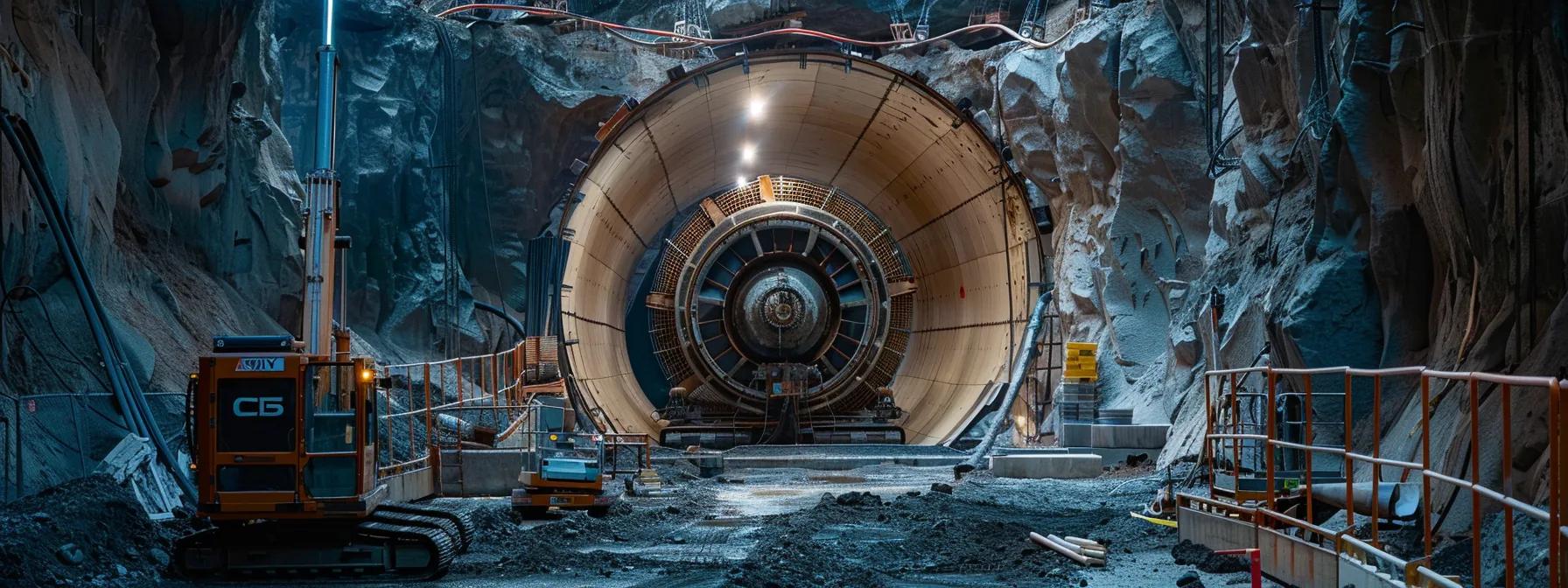
Professional Under Road Boring in Glenmore Park: Fast, Clean & Precise Utility Installation Services
The world of modern civil engineering now embraces trenchless technology for installing utilities with minimal disruption. In Glenmore Park, rapid urban development and a focus on environmental protection have driven the demand for fast, clean, and precise installation methods. Under-road boring avoids lengthy excavations and surface damage, making it ideal for municipal and commercial infrastructure projects. This article explains the technical aspects, advantages, and applications of under-road boring, along with the key technologies and regulatory frameworks that support these advanced methods.
Furthermore, the content explains how experts achieve precision while bypassing existing infrastructure and why careful site assessments and strict adherence to safety standards are essential.
What Is Under Road Boring and How Does It Work in Glenmore Park?
Under road boring is a trenchless method used to install utilities like water, gas, electrical, and telecommunications lines beneath existing roads without large-scale excavation. The process involves drilling horizontally to create a tunnel through which utilities are pulled or pushed, minimising disruption and protecting the surrounding environment. In Glenmore Park, where new utilities must blend with mature infrastructure, this method reduces downtime, repair costs, and surface damage.
The technique uses directional drilling and auger boring machines equipped with remote controls and sensors to measure angles, depth, and soil conditions. A detailed site assessment maps the ground composition and existing utilities, ensuring the drill follows a safe, controlled path. Strict safety and environmental compliance—such as noise and waste management—further enhance project efficiency and cleanliness, making under-road boring a sustainable solution for urban utility expansion.
What Are the Key Trenchless Technologies Used for Under-Road Boring?
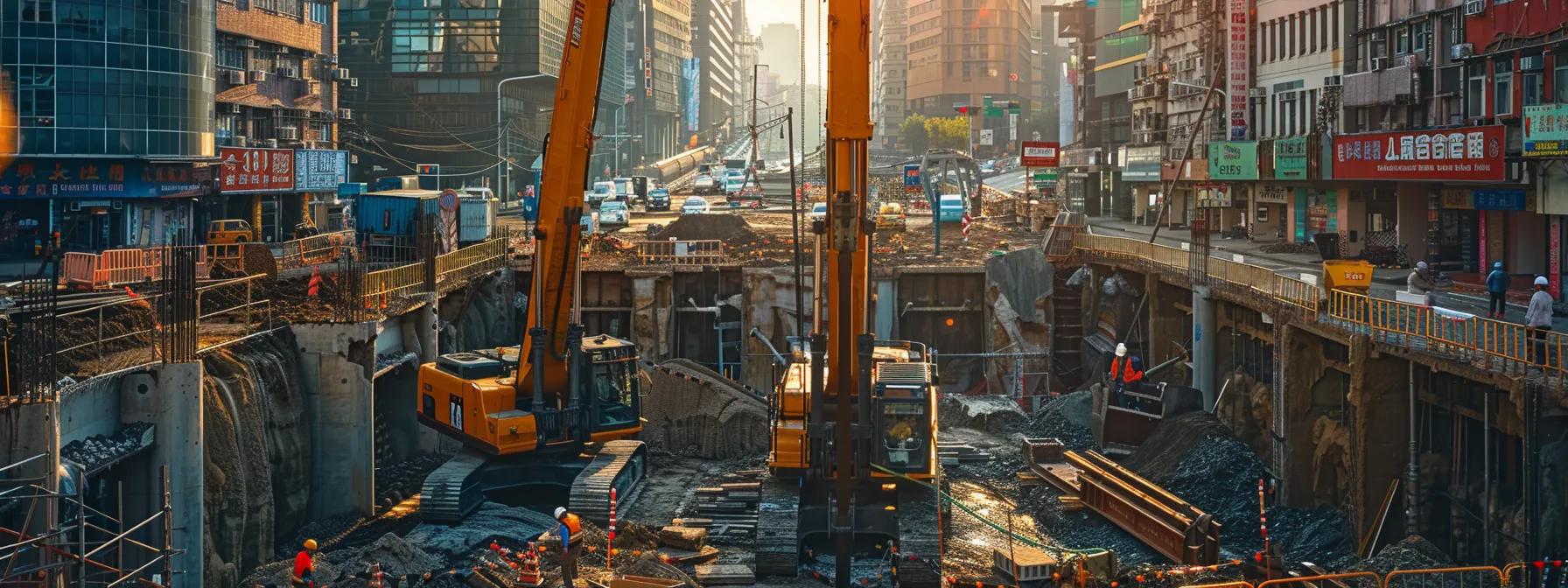
Several trenchless technologies form the basis of under-road boring:
- Horizontal Directional Drilling (HDD): Uses controlled drilling over long distances, ideal for extensive utility installations.
- Auger Boring: Utilizes a rotating helical screw to simultaneously drill and remove soil, best for softer ground and shorter distances.
- Pipe Bursting: Involves fracturing an old pipe while pulling a new one into place, suited for replacing deteriorated infrastructure.
- Microtunneling: Employs guided bores for small-diameter pipelines in congested urban settings.
These methods can be integrated with computer-aided design and sensor-based monitoring systems to provide real-time feedback on drilling parameters. This ensures optimal accuracy, reduced operational time, and minimal environmental impact. The table below compares the methods:
| Technology | Key Mechanism | Best for Use Case | Precision Level | Environmental Impact |
|---|---|---|---|---|
| Horizontal Directional Drilling (HDD) | Remote-controlled directional drill | Long-distance utility installation | High | Low |
| Auger Boring | Rotating helical screw for soil removal | Softer ground, short-distance projects | Medium-High | Low |
| Pipe Bursting | Fracturing existing pipes and pulling new ones in | Replacement of deteriorated infrastructure | Medium | Low |
| Microtunneling | Small diameter tunnelling using guided bores | Urban areas with minimal disruption | Very High | Very Low |
This range of technologies enables engineers in Glenmore Park to address varying project requirements with precision and efficiency.
How Does Horizontal Directional Drilling Ensure Precision and Cleanliness?
Horizontal Directional Drilling (HDD) achieves precision and cleanliness by combining thorough planning with high-tech monitoring. Subsurface imaging tools, like ground-penetrating radar and electromagnetic locators, are used to map the underground environment and identify obstacles. Sensors (including inclinometers and gyroscopes) mounted on the drill head continuously monitor direction, depth, and inclination. Real-time data allows operators to adjust the drill’s trajectory so the bore remains within strict tolerances.
The process also maintains cleanliness by minimising soil displacement. Fluid injection stabilises the bore, carries generated cuttings to the surface, and minimises waste. This method not only protects existing utilities from accidental damage but also reduces the volume of spoil and the need for extensive post-construction cleanup.
When Is Auger Boring the Best Choice for Glenmore Park Projects?
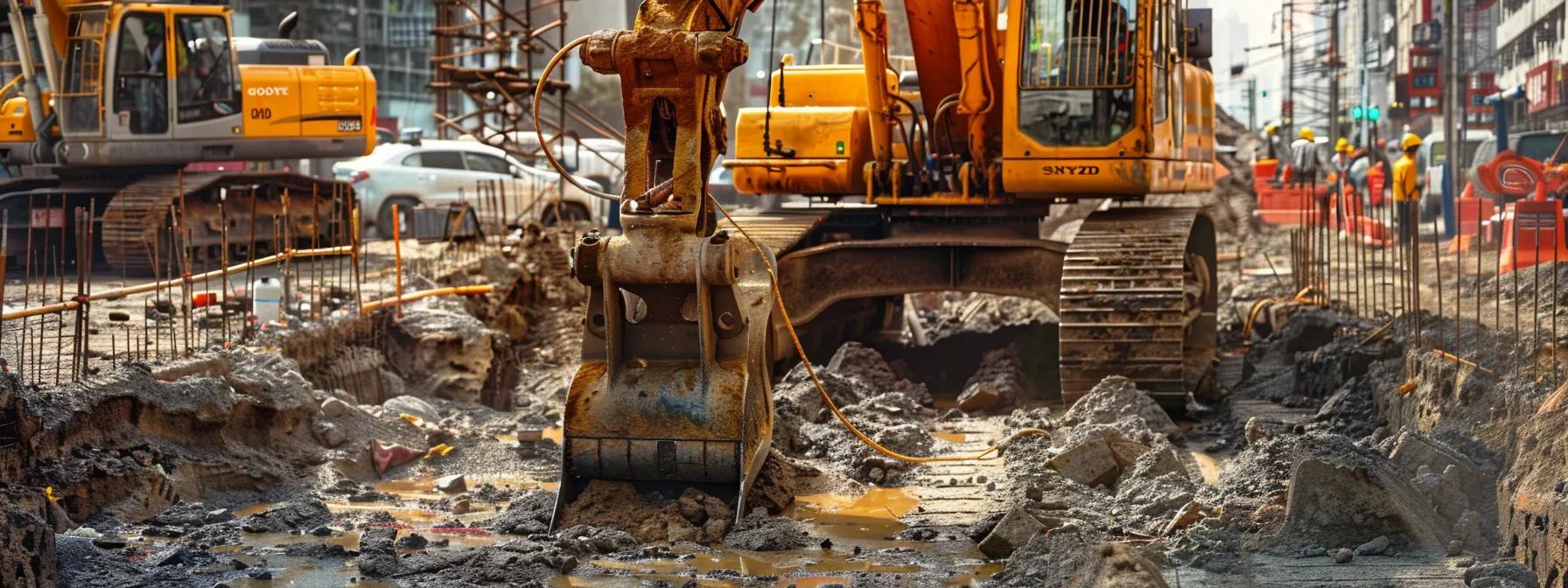
Auger boring is best suited for projects with softer soils and shorter distances. This method uses a continuous helical screw to drill and simultaneously remove soil, which is ideal for installing water and gas pipes in areas with uncompacted soil. Its simplicity translates into faster project completion and lower equipment costs, which is beneficial in urban settings where traffic disruptions must be minimised.
Additionally, the lower complexity of auger boring means moderate precision is usually sufficient, and the method produces minimal spoil. Its lower carbon footprint aligns with environmental sustainability initiatives, making auger boring a smart, cost-effective choice for many Glenmore Park projects.
Why Choose Professional Under-Road Boring Services in Glenmore Park?
Professional under-road boring services offer several key advantages:
- Faster Project Completion: Streamlined processes from site assessment to post-installation cleanup minimise road closures and disruptions.
- Enhanced Precision: Advanced equipment and experienced operators ensure accurate utility placement, reducing the risk of damage to existing infrastructure.
- Reduced Environmental Impact: Strict adherence to environmental guidelines and innovative waste management practices keep the worksite clean and eco-friendly.
- Cost Savings: Although professional services may have higher initial costs, the reduction in downtime, fewer repair incidents, and improved long-term asset reliability result in significant cost savings.
By choosing expert contractors with in-depth local knowledge and compliance expertise, clients in Glenmore Park benefit from efficient, reliable, and sustainable utility installations.
How Does Fast Project Completion Minimise Disruption?
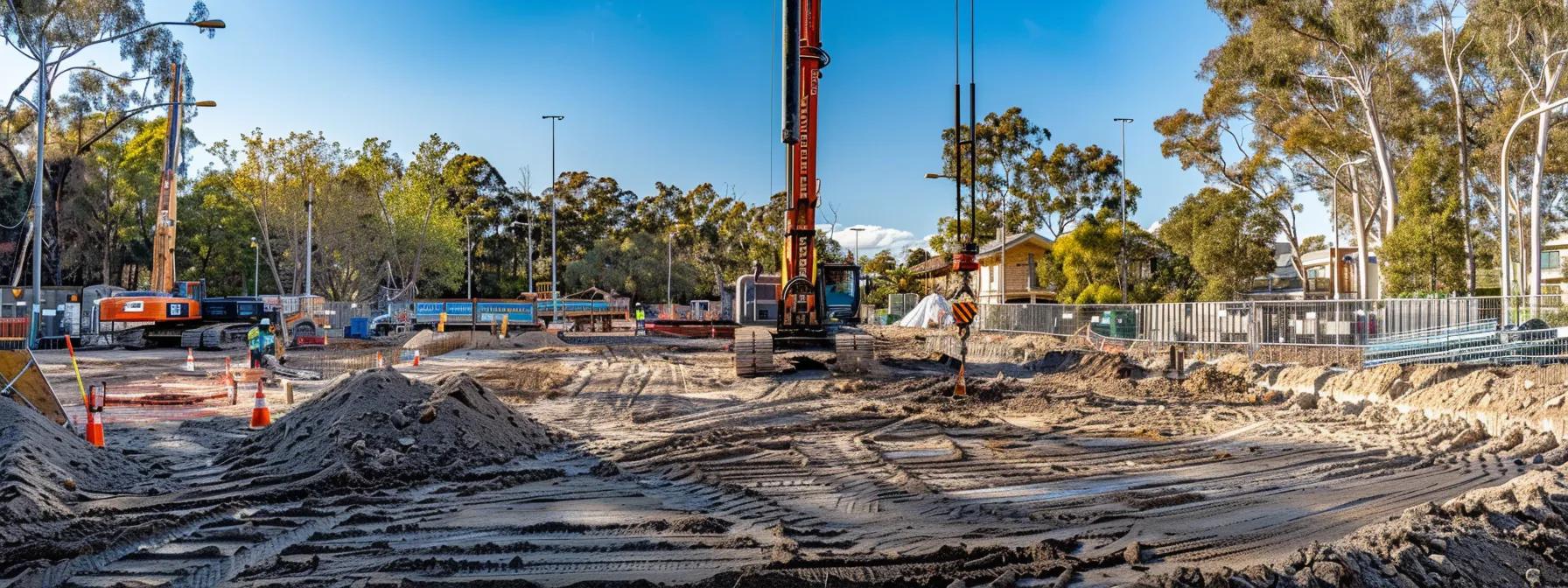
Fast project completion is essential in urban areas like Glenmore Park. When projects are finished quickly, roads remain accessible, and traffic congestion is minimised. Reduced construction duration also lessens negative impacts on local businesses and community routines. Advanced, automated drilling equipment and efficient project management practices allow for a seamless workflow—from pre-assessment to immediate post-installation cleanup.
Quick turnaround times help maintain continuity of essential services, such as water and gas supply, and reduce costly downtime. This efficiency not only improves the quality of life for residents but also enhances the overall reputation of the service providers by ensuring minimal operational disruption.
What Makes Clean Under Road Boring Environmentally Friendly?
Clean under road boring limits environmental impact by confining excavation to a narrow, controlled path, thereby preserving surface vegetation and reducing soil disruption. Unlike traditional trench digging that exposes large areas of soil, trenchless methods reduce the volume of waste and minimise the risk of erosion and contamination.
Drilling fluids, typically a mix of water and bentonite clay, are managed by recapturing, treating, and recycling them to reduce waste. The controlled environment helps prevent dust, noise, and debris from affecting the surrounding area. Strict adherence to local environmental regulations ensures that these projects meet sustainable construction standards while protecting the local ecosystem.
How Is Precision Achieved to Avoid Existing Infrastructure Conflicts?

Avoiding conflicts with existing infrastructure is critical in densely populated areas. Precision is achieved through careful mapping of underground utilities using ground-penetrating radar and electromagnetic locators. This mapping helps engineers design an accurate bore path that respects the locations of water, gas, and electrical lines.
During the drilling process, real-time monitoring using sensors, inclinometers, and gyroscopes ensures the drill head stays on course. Advanced GIS systems overlay the drilling progress on high-resolution maps so operators can quickly address any deviations. Stringent safety protocols, pre-boring surveys, and barrier markings further protect existing utilities, ensuring that the new installation does not interfere with established infrastructure.
Which Utilities Can Be Installed Using Under Road Boring in Glenmore Park?
Under-road boring is versatile and can be used to install a variety of utilities beneath roads with minimal surface disruption. In Glenmore Park, common installations include:
- Water Lines – Providing a continuous water supply without lengthy road closures.
- Gas Pipelines – Ensuring safe, secure gas delivery with minimal excavation.
- Electrical Conduits – Allowing precise installation of power lines without interfering with existing networks.
- Telecommunications Cables – Supporting fibre-optic and data services with careful handling to maintain signal integrity.
- Sewer and Drainage Systems – Enhancing municipal infrastructure while preserving the road’s surface.
The precision, speed, and environmental efficiency of under-road boring make it an ideal solution for integrating a wide range of utility systems seamlessly.
How Are Water and Gas Lines Safely Installed Under Roads?
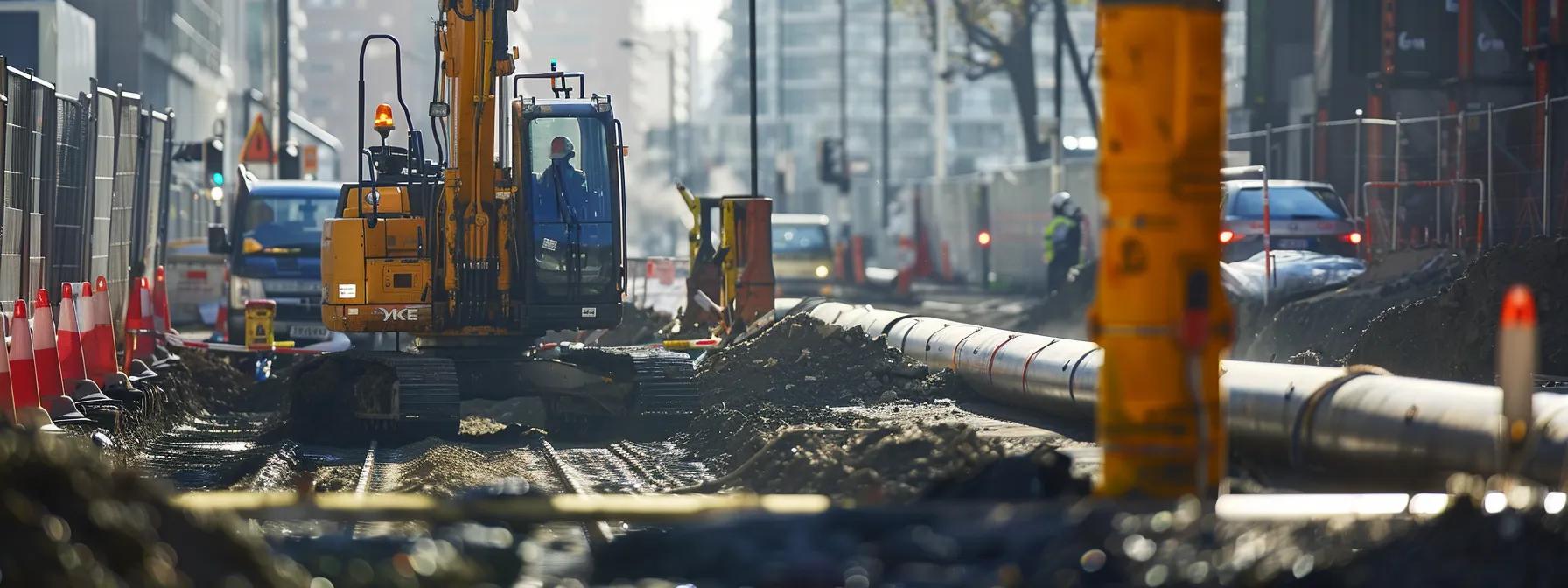
Water and gas lines are installed using highly controlled trenchless methods that emphasise safety and precision. Comprehensive pre-project planning, including underground surveys, identifies potential hazards. During installation, directional drilling and auger boring techniques—supported by advanced guidance systems—ensure the drill follows the exact path needed.
Sealed, pre-coated pipes are used for water lines to prevent corrosion, while additional safety measures like pressure testing and pipe burst evaluations are implemented for gas pipelines. Controlled drilling fluids act as lubricants and stabilisers, further reducing the risk of collapse. Rigorous testing and a complete reinstatement of the surface ensure that all installations are safe and secure.
What Are the Requirements for Electrical and Telecommunications Boring?
Installing electrical and telecommunications cables underground requires specialised techniques to prevent issues such as electromagnetic interference and signal degradation. Contractors use horizontal directional drilling (HDD) and microtunneling methods along with remotely controlled drill heads fitted with high-definition sensors to follow a precise path. Non-metallic, shielded conduits are often used to protect the cables.
Additional protective measures include regular pressure tests and insulation integrity checks. Robust monitoring systems ensure that any deviation is immediately corrected. Strict adherence to provincial and municipal regulatory guidelines guarantees that these delicate installations meet high safety and performance standards.
How Do Municipal and Commercial Clients Benefit From These Services?
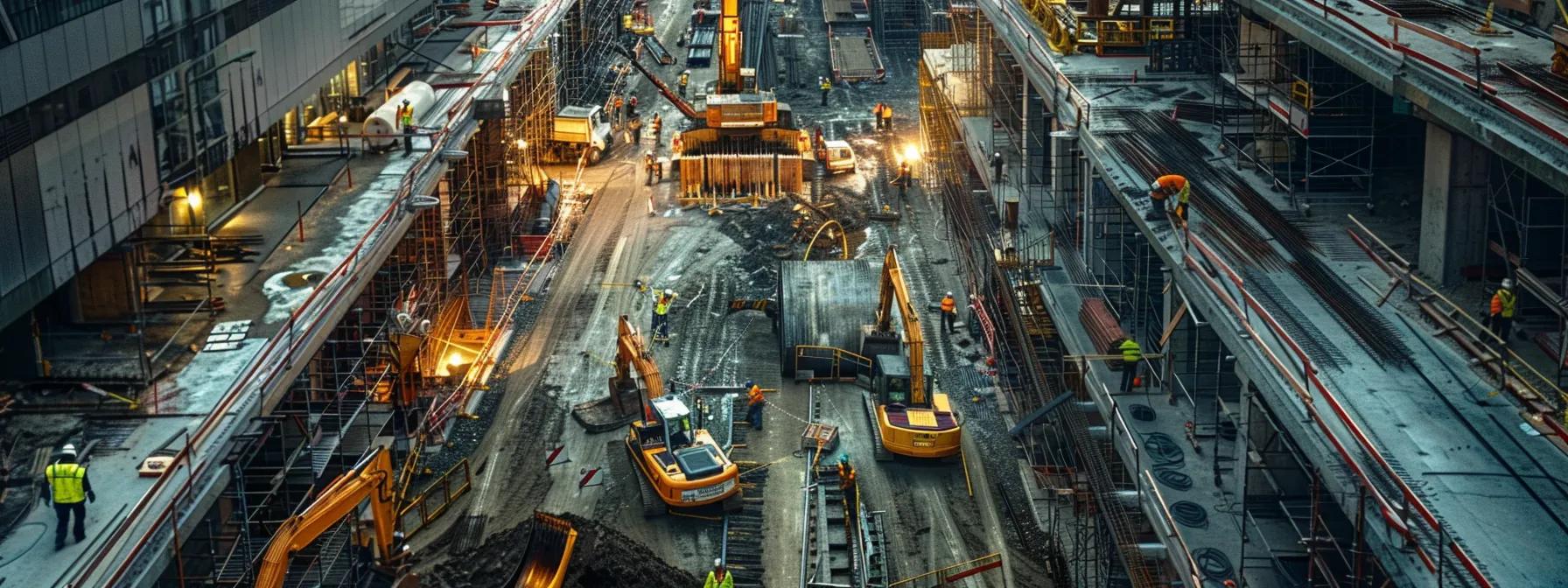
Municipal and commercial clients benefit greatly from under-road boring because it minimises disruption and ensures high reliability. For municipalities, rapid project completion means less impact on traffic, smoother public works management, and protection of local industries. Commercial clients enjoy improved operational efficiency due to reduced downtime and lower chances of infrastructure damage, which translates into significant long-term cost savings.
Furthermore, the precise placement of utilities reduces future maintenance needs. Overall, these projects lead to a resilient, safe, and sustainable urban environment that fosters community confidence and economic stability.
How Does Glenmore Park Trenchless Solutions Ensure Quality and Compliance?
Glenmore Park trenchless solutions maintain high quality and regulatory compliance through a solid blend of advanced technology and expert personnel. Quality assurance begins with rigorous pre-assessment surveys and site investigations. This information forms the basis for a tailored boring plan that meets strict technical and safety standards.
State-of-the-art equipment with digital monitoring provides real-time feedback, and regular calibration ensures consistent performance. Contractors follow well-defined safety and environmental protocols set by local authorities, and comprehensive documentation, along with independent audits, ensures every phase meets the required standards. This thorough approach guarantees that installations are secure, durable, and fully compliant with all regulations.
What Local Regulations Affect Under Road Boring Projects?
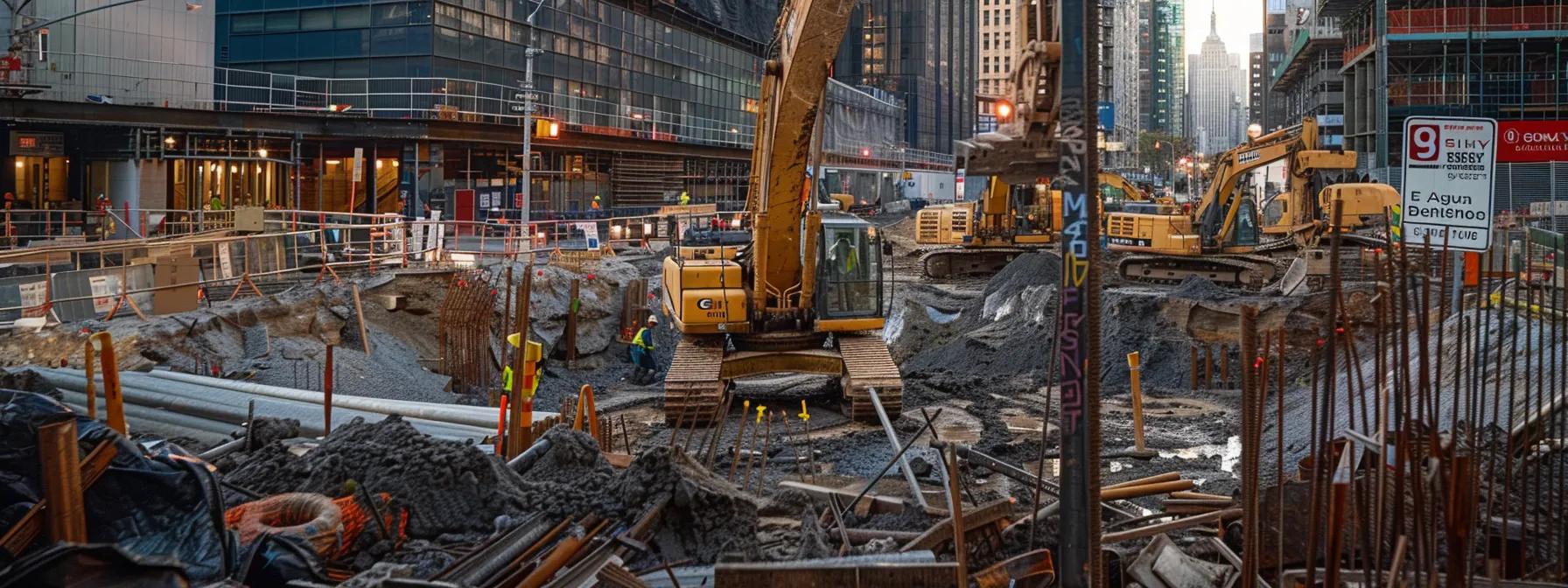
Local regulations for under-road boring in Glenmore Park cover safety, environmental, and operational aspects. Guidelines specify limits on excavation depths, noise levels, vibration, and the process of restoring public spaces once work is complete. Permits and Environmental Impact Assessments are required to manage drilling fluids, soil exposure, and waste disposal. Strict setback distances from existing infrastructure and emergency response protocols further ensure public safety. Adhering to these regulations not only protects the community but also helps avoid costly delays and legal challenges.
How Does Glenmore Park Experience Improve Project Outcomes?
Contractors in Glenmore Park leverage years of local experience to improve project outcomes. Their deep understanding of local soil conditions, utility layouts, and regulatory requirements allows them to plan and execute precise boring operations. By learning from previous projects, these experts can anticipate challenges and implement proactive solutions, resulting in smoother installations and reduced project timelines.
Strong relationships with local authorities and suppliers ensure quick access to permits and quality materials. This collective expertise leads to robust, long-lasting infrastructure that minimises disruptions, reduces maintenance costs, and enhances overall asset reliability.
What Safety Standards Are Followed During Under-Road Boring?
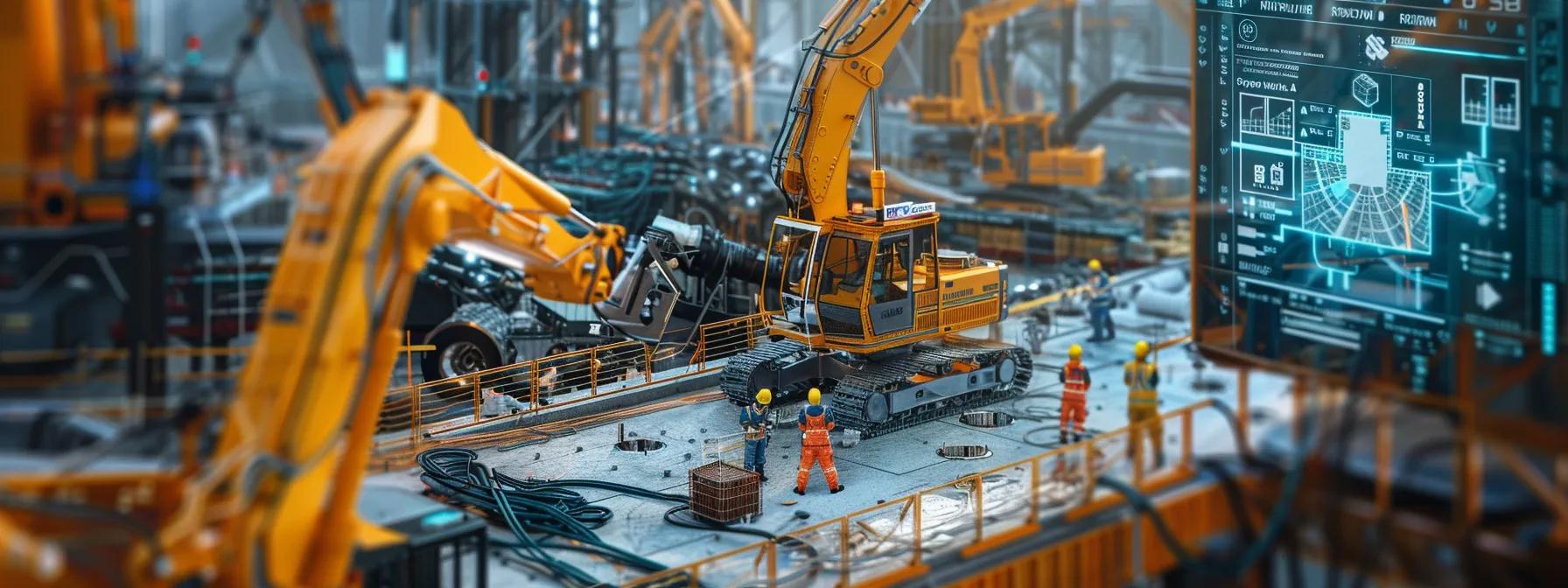
Safety is paramount in underground boring. Contractors in Glenmore Park adhere to strict national and local safety protocols. Continuous real-time monitoring with automated systems, mandatory use of personal protective equipment (PPE), and detailed emergency response plans help keep workers and the public safe.
Regular safety audits, drill inspections, and comprehensive risk assessments ensure that any potential hazards are identified and addressed immediately. Strict management of drilling fluids, spoil removal, and site cleanup further guarantees a safe and environmentally secure worksite throughout the project.
What Are the Typical Steps in a Fast, Clean, and Precise Under-Grade Boring Project?
A typical under-road boring project follows these key steps:
- Site Assessment: Detailed surveys and mapping establish the optimal bore path.
- Mobilisation: Equipment is transported, and a secure perimeter is set up.
- Drilling/Boring: HDD or auger boring is executed with real-time monitoring.
- Utility Installation: Pipelines, cables, or conduits are inserted into the bored tunnel.
- Testing and Quality Assurance: Thorough tests verify installation integrity.
- Post-Installation Cleanup: Residual drilling fluids and spoil are removed, restoring the site.
Each phase is carefully managed to ensure efficiency, precision, and minimal disruption, which helps avoid cost overruns and safety issues.
What Equipment and Techniques Are Used During Installation?
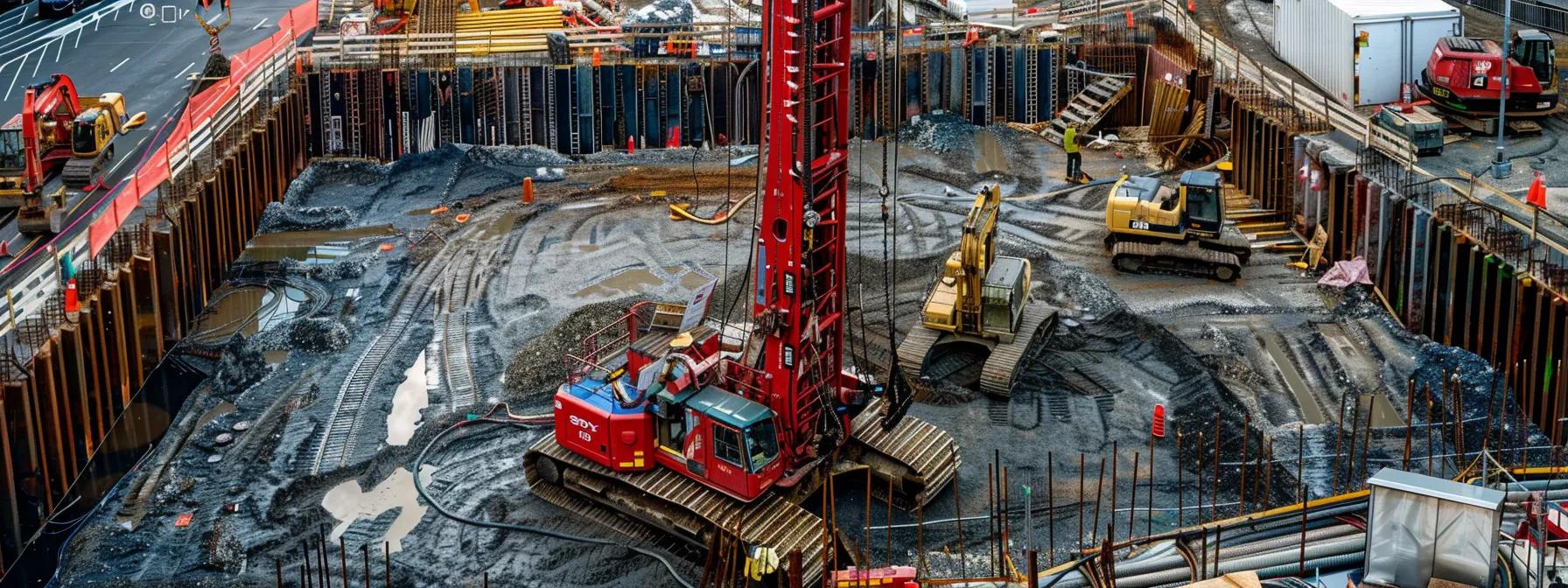
Under road boring projects use a variety of specialised equipment is used to ensure successful installations. The drilling rig, whether HDD or auger boring, is central to the process. High-powered machines equipped with sensor arrays and GPS-based guidance systems maintain precise control over the bore’s trajectory.
Auxiliary equipment, such as fluid management systems, helps regulate the injection and recovery of drilling slurry, ensuring bore stability. Reinforced drill pipes, specialised drill bits, and pulling rigs are also used, along with advanced 3D GIS mapping for real-time monitoring. These combined techniques not only boost accuracy and speed but also ensure environmental and safety compliance.
How Is Post-Installation Cleanup Managed to Ensure Cleanliness?
Post-installation cleanup is handled through systematic procedures that restore the site to its original condition. After utility installation, the site is inspected for any residual drilling fluids, soil slicks, or debris. Specialised teams use vacuum trucks and mobile recovery systems to remove waste effectively.
Cleanup is often done in stages, beginning with bulk waste removal followed by finer cleaning measures. Water quality tests and soil sampling confirm that the site meets all regulatory standards before final approval. This detailed approach ensures that the worksite is not only restored visually but is also safe for public use.
How Much Does Professional Under-Road Boring Cost in Glenmore Park?
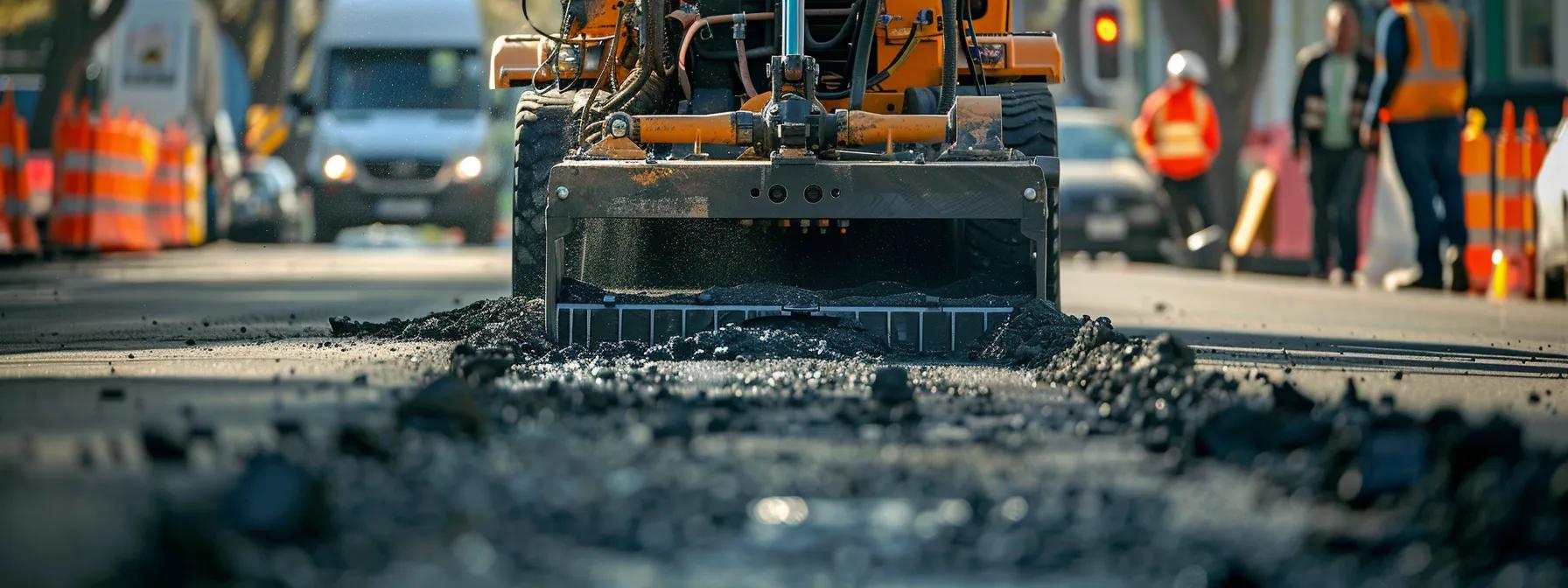
Costs for professional under-road boring depend on various factors: bore length, utility type and diameter, soil conditions, project complexity, and additional regulatory or environmental requirements. Although professional services typically carry a premium due to advanced technology and specialised personnel, the long-term savings from reduced downtime, maintenance, and fewer repair incidents often compensate for the initial cost.
Factors influencing cost include project dimensions, material requirements, site accessibility, regulatory compliance, and equipment mobilisation. Detailed cost assessments and competitive quotes help clients understand the breakdown and potential savings from efficient project planning.
How Does Fast and Precise Boring Save Money Long-Term?
Fast and precise boring saves money by reducing labour costs, minimising operational downtime, and preventing damage to existing infrastructure. Accurate installations extend the lifespan of utilities, lowering maintenance costs. Efficient project management reduces the need for rework and resource waste, which in turn decreases the overall cost per meter of the installation.
Advanced technologies help reduce errors and accidents, lowering insurance premiums and liability exposure. For both municipal and commercial clients, these efficiencies result in a strong return on investment despite the higher initial expenditure.
Where Can You Find Reliable Under-Road Boring Services in Glenmore Park?

Reliable under-road boring services are available from well-established contractors in Glenmore Park who have a proven history of fast, clean, and precise utility installations. Look for providers with extensive experience in both municipal and commercial projects, strong local knowledge, and a track record of meeting regulatory and safety standards.
Key indicators of a reliable contractor include positive client testimonials, industry certifications, comprehensive project documentation, and transparent pricing. Prospective clients are advised to compare multiple quotes and check references to ensure they select a provider who meets all requirements and offers competitive terms.
How to Choose the Right Contractor for Your Under-Grade Boring Needs?
Choosing the right contractor involves evaluating their experience, technical capabilities, and customer service record. Prospective clients should review previous project portfolios and client testimonials to ensure the contractor has completed similar projects on time and within budget.
Detailed proposals outlining timeline, equipment, risk mitigation strategies, and compliance with regulatory standards are essential. Comparing multiple quotes and requesting references can help ensure competitive pricing without sacrificing quality or safety. Contractors with strong local expertise are preferable, as they are more familiar with regional regulatory and environmental conditions.
What Do Glenmore Park Customers Say About Their Boring Experience?

Customers in Glenmore Park consistently praise the efficiency, precision, and minimal disruption offered by professional under-road boring services. Municipal and commercial clients note that advanced drilling technologies and thorough pre-project assessments result in fewer complications and seamless integration with existing infrastructure. Clear communication and detailed cost breakdowns further enhance customer satisfaction, with many highlighting reduced maintenance costs and extended utility lifespan as long-term benefits of these projects.
How to Request a Quote or Consultation for Under Road Boring?
Requesting a quote or consultation is straightforward. Potential clients can visit a contractor’s website and complete an online form with details such as project location, utility type, project length, and anticipated start date. Alternatively, direct contact via phone or in-person meetings may be arranged to discuss specifics.
During the consultation, contractors perform a preliminary site assessment and provide a tailored quote that includes timelines, cost estimates, and risk mitigation strategies. Transparency in the quoting process is emphasised, and clients are encouraged to obtain multiple quotes to ensure they receive a competitive, comprehensive offer.
Detailed Summary Table of Under-Road Boring Processes
Before the conclusion, the table below summarises key aspects of under road boring in Glenmore Park:
| Phase | Key Activities | Equipment Used | Outcome | Environmental Impact |
|---|---|---|---|---|
| Site Assessment | Detailed surveys and mapping | GPR, electromagnetic locators | Accurate bore path planning | Minimal disruption |
| Mobilisation | Equipment setup and site security | Drilling rigs, support vehicles | Secure and ready worksite | Low |
| Drilling/Boring | Directional drilling using HDD/auger | HDD rigs, augers, sensors | Precisely drilled borehole | Controlled spoil generation |
| Utility Installation | Insertion of pipelines/cables | Pulling rigs, specialised conduits | Correct utility alignment and integration | No additional excavation |
| Testing and Quality Assurance | Pressure tests, integrity checks | Testing instruments | Verified functional installation | Zero pollution post-testing |
| Post-Installation Cleanup | Removal of residual fluids/spoil | Vacuum trucks, mobile recovery systems | Restored site with clean surface | Environmentally friendly |
This table provides a quick reference to understand the comprehensive process of under-road boring in Glenmore Park.
Frequently Asked Questions
Q: What is under-road boring, and why is it beneficial? A: Under-road boring is a trenchless installation method that installs utilities beneath roads without extensive excavation. It minimises surface disruption, speeds up installation, and is environmentally friendly by reducing waste and soil disturbance.
Q: How can horizontal directional drilling (HDD) improve accuracy in utility installations? A: HDD offers real-time monitoring through sensors, inclinometers, and GPS-based systems, allowing operators to adjust drilling parameters immediately. This precision helps avoid conflicts with existing utilities and ensures accurate utility placement.
Q: What factors influence the cost of an under-road boring project in Glenmore Park? A: Costs depend on bore length and diameter, utility type, soil conditions, project complexity, and regulatory requirements. Advanced technology and skilled personnel add to initial costs, but long-term savings through reduced maintenance and downtime compensate for these expenses.
Q: What safety measures are taken during the under-road boring process? A: Comprehensive site assessments, real-time monitoring, strict use of PPE, emergency protocols, and continuous risk assessments ensure safety throughout the process. Automated systems halt operations if any anomalies are detected.
Q: How does under-road boring meet environmental compliance in urban areas? A: It minimises excavation, protects surface vegetation, and reduces waste. Recycling drilling fluids and strict adherence to noise and waste regulations help maintain a low environmental impact.
Q: Can under-road boring be used for installing all types of utilities? A: Yes, it is versatile enough for installing water, gas, electrical, telecommunications, and sewer lines, with each utility installed via methods tailored to achieve maximum precision and safety.
Q: How can I request a quote for an under-road boring project? A: Simply fill out an online form on a contractor’s website or contact them directly via phone. A preliminary consultation and site assessment will be carried out to provide a detailed, tailored cost proposal.
Final Thoughts
Professional under-road boring in Glenmore Park offers a fast, clean, and precise alternative to traditional excavation for utility installations. Advanced technologies such as HDD and auger boring ensure minimal disruption, reduced downtime, and lower long-term maintenance costs. Municipal and commercial clients benefit from enhanced safety, strong environmental compliance, and reliable installation standards. With a proven track record and comprehensive quality controls, contractors in Glenmore Park set high benchmarks for sustainable infrastructure development.

